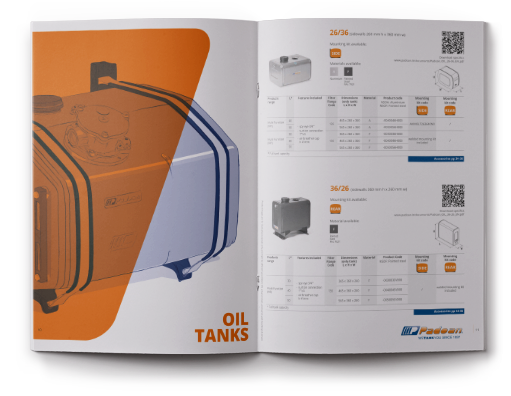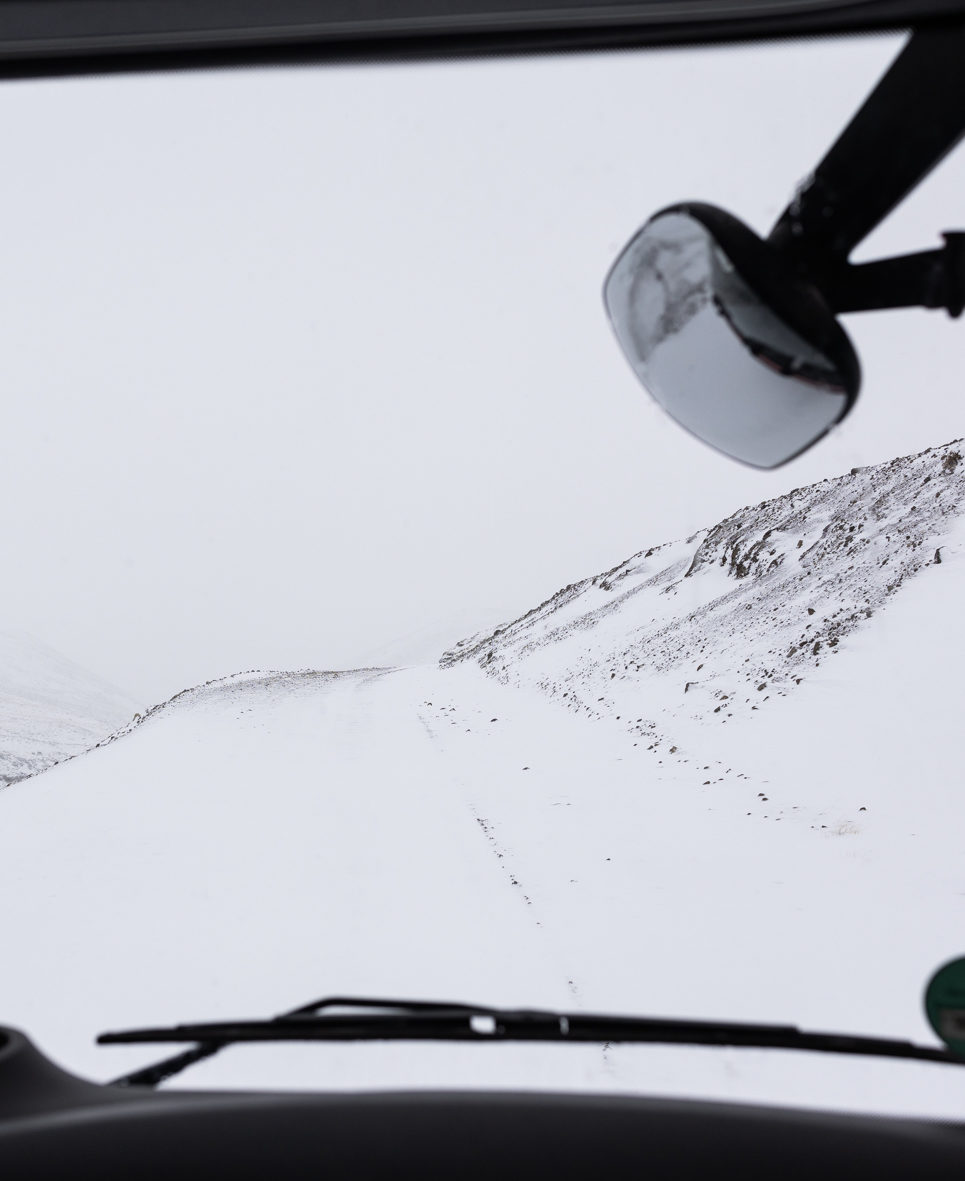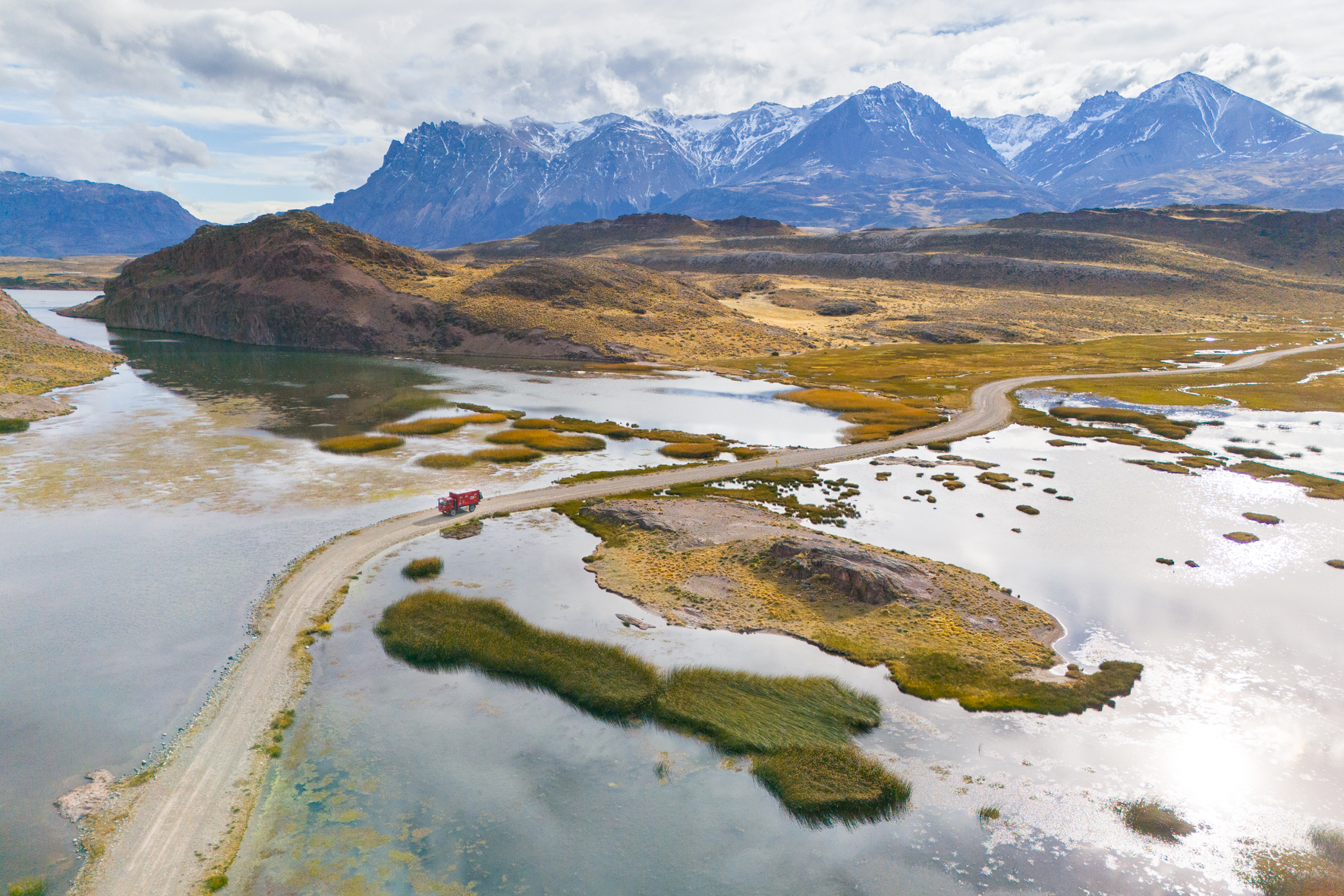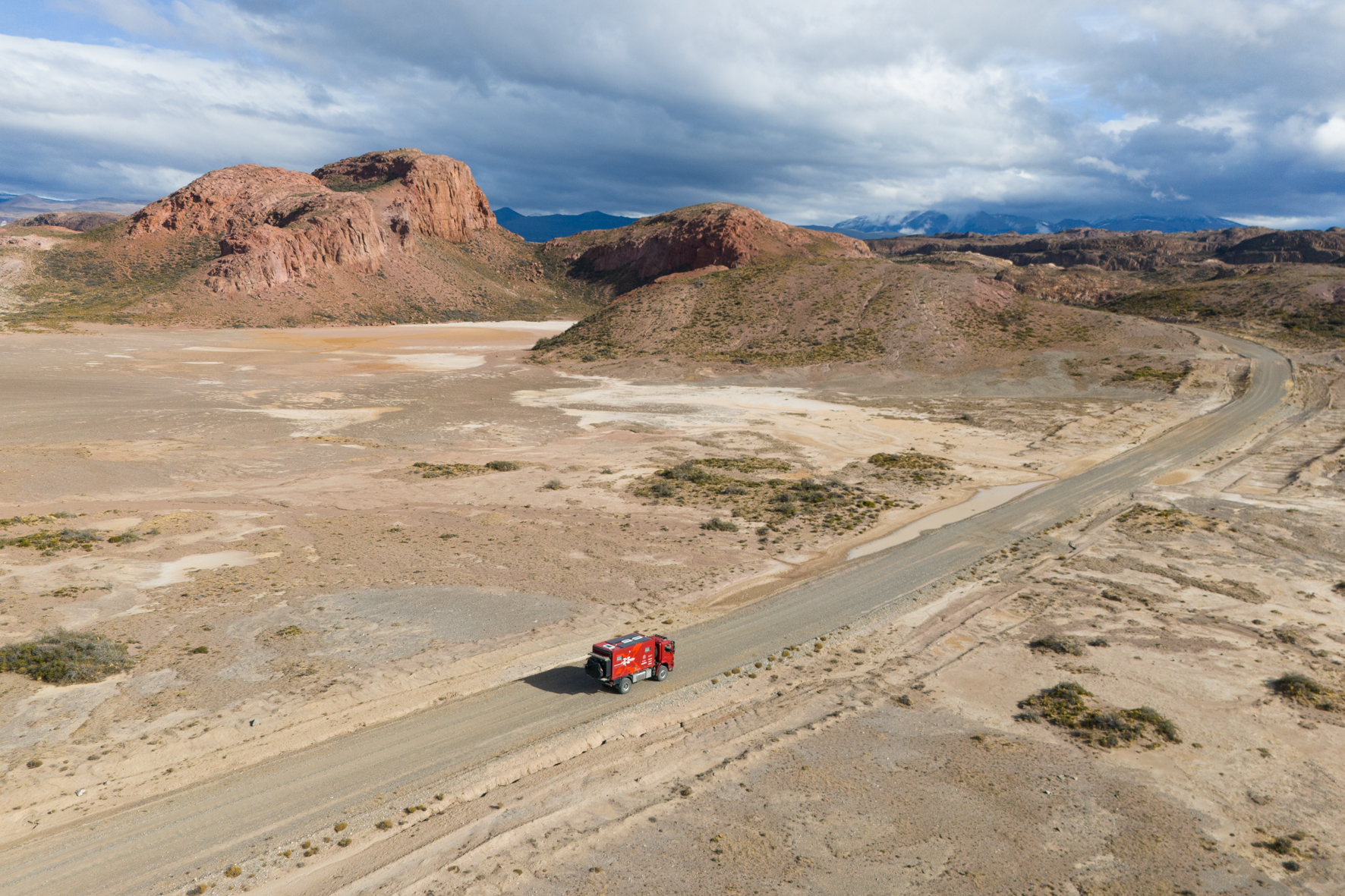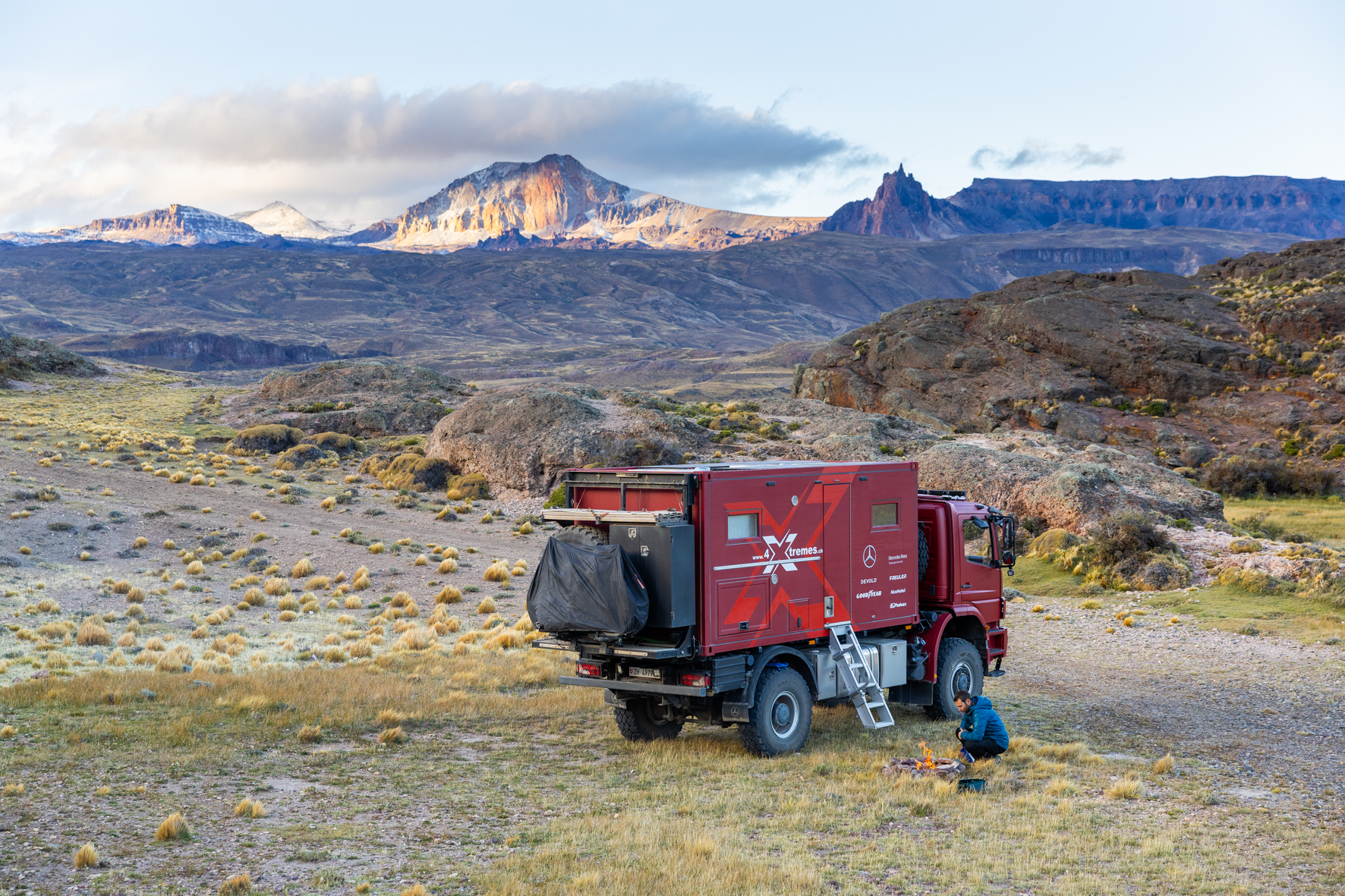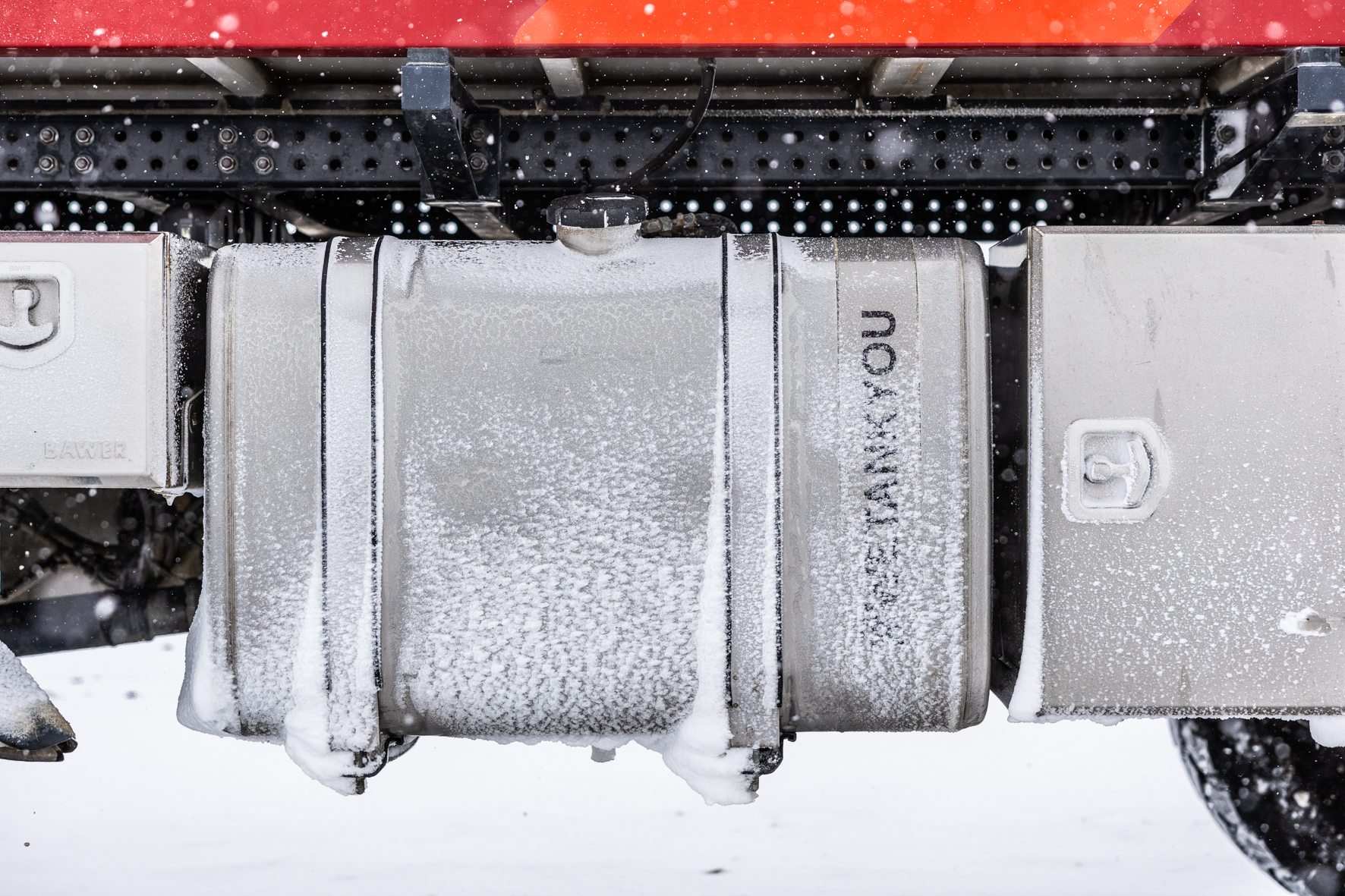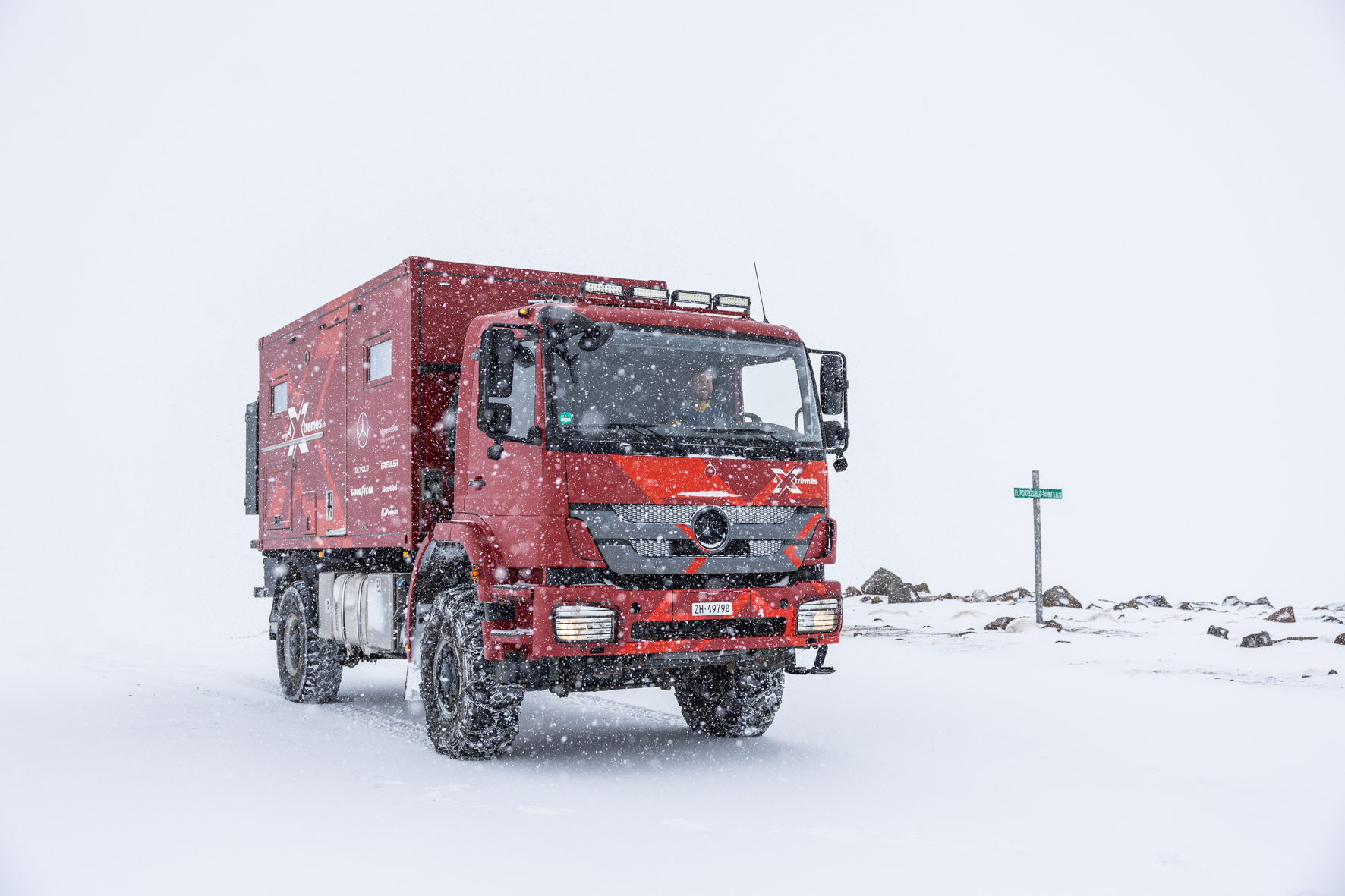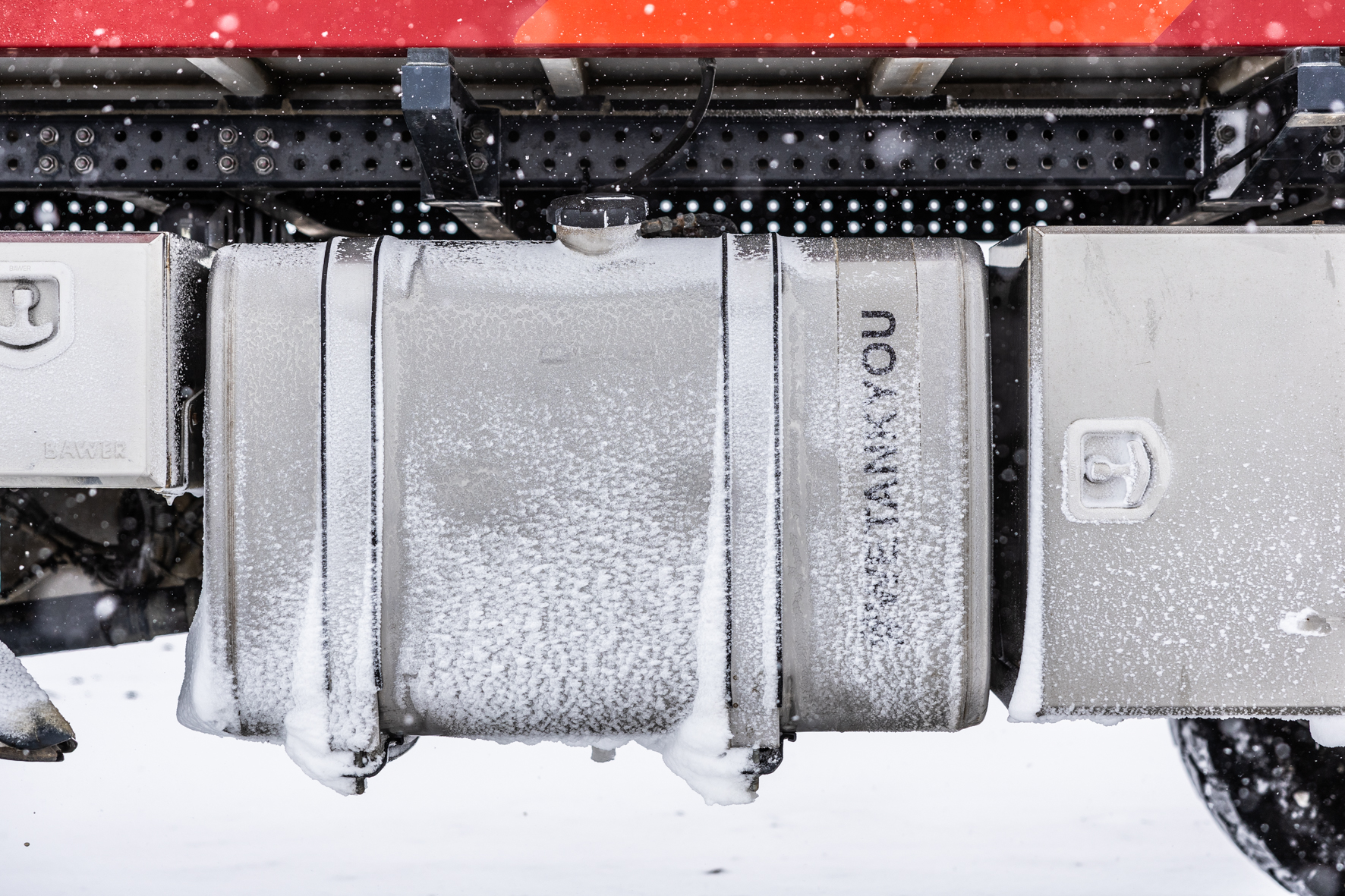
Neuigkeiten25 Juli 2024
TANKTRIBE – 4-XTREMES: Large fuel tanks against unforeseen challenges
In our recent reports, we discussed various topics related to safety and increasing our diesel capacity in case we need to adjust our travel route for any unforeseen reason.
When we started our journey on a remote route in Argentina, we had four days of beautiful weather, with sunshine and pleasant temperatures during the day.
We kept an eye on the weather, especially the wind which is one of the most defining factors in Patagonia.
On the fifth day, the wind changed, and rain was forecasted. This was no problem for us, as we have all-wheel drive and good off-road tires.
The next morning, it rained a little, and the next major pass was hidden in the clouds. We checked the weather app again, and saw that the rain had turned into snow.
We decided to give it a go anyway. Our next destination was a village which was only 100 km away, where we planned to restock our supplies and refuel.
Driving up the mountain pass, we found the roads completely covered with snow.
Out of precaution, we installed our snow chains. Although the gravel road gave us good grip beneath the snow, there were occasional ice patches which were slippery and we couldn’t see them because they were covered with snow.
The next 30km took us 3 hours. When we reached the pass summit, we were in a complete white out and could barley make out the road. There were only 70km left to our destination, but because conditions were getting worse, we decided to turn around.
The detour around the mountains was 230km.
Luckily we had enough fuel to cover the distance, which made our decision to turn around easy. Fortunately situations like this one are rare, but it gave us the option to drive a route which we knew was safe, instead of having to risk a route because it was shorter.
So while driving the boring asphalted route around the mountains, we knew once again, that having large fuel tanks was the right decision for unplanned incidents like this one.
Andrea & Mike
www.4-xtremes.ch
Read other articles from Andrea & Mike:
Laden Sie unsere
Unternehmensbroschüre herunter
Entdecken Sie unseren Katalog mit allen Details zu unseren Produkten.
PDF HERUNTERLADEN